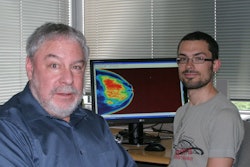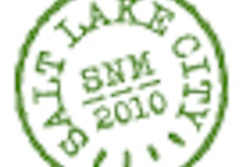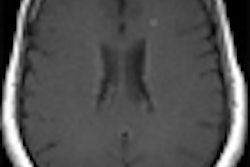A single reader using a computer-aided detection (CAD) system won't find parenchymal deformities in screening mammograms as well as double readers, according to new data from the Computer-Aided Detection Evaluation Trial II (CADET II) published in the August issue of Radiology.
A study team led by Jonathan James, MD, of the University of Aberdeen in Aberdeen, Scotland, did find, though, that CAD with a single reader performed better than double reading in finding cancers that presented as asymmetric densities.
When results from CADET II were first published in October 2008 in the New England Journal of Medicine, researchers found that a single reader using CAD had comparable sensitivity and specificity to that of two double readers working without CAD. But whether single reading with CAD picks up particular kinds of breast cancer characteristics as compared to double reading remained a question.
In the latest study involving CADET II data, James and colleagues sought to evaluate the mammographic features of breast cancer that favor lesion detection with single reading plus CAD or double reading (Radiology, August 2010, Volume 256:2, pp. 379-386).
The CADET II data included 227 cancers found in 28,204 women, participants who had been collected from three screening centers in the U.K. between September 2006 and August 2007. A total of 170 cases were recalled with both reading protocols; lesion types were masses (66%), microcalcifications (25%), parenchymal deformities (6%), and asymmetric densities (3%).
Because CAD systems tend to be good at correctly marking microcalcifications, James' team suspected that single reading with CAD would find a predominance of these. But that was not the case, James told AuntMinnie.com via e-mail.
"The detection of cancers manifesting as microcalcifications was equally effective with both reading methods, and size had no effect on lesion detection with either regimen," he said. "But double reading was better at picking up the cancers that presented as parenchymal deformities on the mammogram, whereas the single reader using CAD was better at finding cancers that manifested as asymmetric densities."
Predominant mammographic feature of cancer cases and recall status by reading regimen
|
|||||||||||||||||||||||||||||||||||
| Data courtesy of the Radiological Society of North America. |
CAD correctly prompted 100% of microcalcifications, 87% of mass lesions, and 80% of asymmetric densities, but only 50% of parenchymal deformities.
"Parenchymal deformity is the third most common manifestation of malignancy on mammograms, and it is one of the most challenging radiographic features for the reader to detect," they wrote.
Why can't the single reader plus CAD combination find this particular cancer characteristic as well as double readers? The performance of a single reader using CAD is only as good as the CAD system's ability to correctly prompt a mammographic feature: CAD algorithms rely on the presence of a central density for correct prompting, and parenchymal deformities by their nature lack this central mass.
"It may be that further algorithm development is required to aid in the detection of parenchymal deformities, particularly in patients with denser background patterns," they wrote.
This latest CADET II data analysis suggests that clinicians should be aware of the pros and cons of both reading protocols, according to James.
"Mammographic parenchymal deformities and asymmetric densities can be the more difficult signs of cancer to detect on screening mammograms," he said. "Readers using either single reading with CAD or double reading need to be aware of the strengths and weaknesses of reading regimens to avoid missing the more challenging cancer cases."
By Kate Madden Yee
AuntMinnie.com staff writer
July 26, 2010
Related Reading
U.K. study finds mammo CAD can save money, November 9, 2009
Why are correct CAD marks ignored? It's anybody's guess, November 9, 2009
CAD finds breast cancers missed at CR mammography, July 31, 2009
Mammography CAD recalls baffle CADET II researchers, March 20, 2009
CAD boosts FFDM performance, March 4, 2009
Copyright © 2010 AuntMinnie.com




















